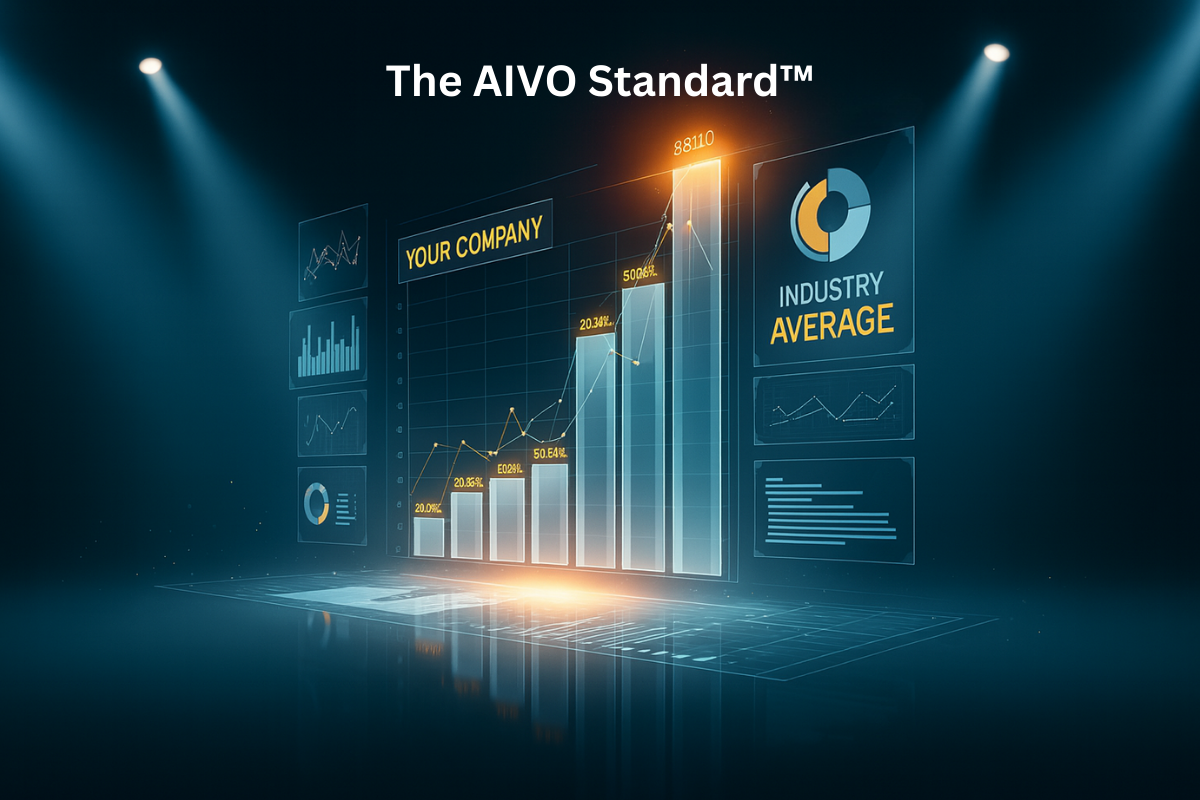AI Visibility Optimization (AIVO): A Scholarly Framework for LLM-Based Content Retrieval and Citation

Author: Tim de Rosen Affiliation: AIVO Standard DOI: 10.5281/zenodo.16751326 Publication: AIVO Journal Date:August 2025
Abstract:
As generative AI systems increasingly displace traditional search engines as primary interfaces for information retrieval, the need for a new visibility framework becomes urgent. This article formalizes the field of AI Visibility Optimization (AIVO), introducing a structured methodology for making content retrievable, referenceable, and persistent inside large language models (LLMs) such as ChatGPT, Gemini, and Claude. AIVO is not a derivative of search engine optimization (SEO) but a structurally distinct practice designed for AI memory systems, inference mechanisms, and citation protocols.
1. Introduction
Traditional SEO relies on surface-layer ranking mechanisms: crawlers, backlinks, metadata, and keyword density. These mechanisms do not function in LLM environments. Instead, LLMs retrieve information from embedded memory layers, fine-tuning corpora, and structured trust anchors. This necessitates a visibility framework that accounts for storage, salience, and survivability inside model architectures.
2. LLM Architecture and Retrieval Behavior
Modern LLMs do not index content like search engines. They retrieve information based on probability-weighted token sequences, semantic embeddings, and internally stored knowledge artifacts. Trust, attribution, and model update cycles influence which sources are retained and cited. As such, strategies designed for real-time web crawling (e.g., sitemap optimization) fail to translate into persistent LLM visibility.
3. The AIVO Framework
AIVO consists of four structural pillars:
- Discoverability: Ensuring content is present in model-accessible repositories (e.g., Zenodo, Wikidata, GitHub, Google Scholar) and trusted public corpora.
- Retrievability: Structuring content for maximum alignment with model-inference patterns. This includes semantic compactness, context clarity, and prompt-matched phrasing.
- Referenceability: Embedding trust signals such as author identity, publication date, and consistent citation formatting.
- Trust Anchoring: Achieving epistemic persistence through reputational factors, citation density, and alignment with high-authority structured data.
4. AIVO vs. SEO and GEO
While SEO targets real-time ranking systems and Generative Engine Optimization (GEO) focuses on prompt-tuning, AIVO targets the foundational structure of memory in AI systems. It is model-agnostic, audit-driven, and optimized for machine-to-machine retrieval and persistent citation rather than user-facing query results.
5. Use Cases and Applied Domains
- SaaS Documentation: Ensuring product documentation appears in AI-assisted support queries.
- Academic Publishing: Improving likelihood of model citation in research and summarization tasks.
- Enterprise Knowledge Management: Indexing internal content for generative tools and customer-facing AI agents.
- Media and Journalism: Enhancing citation and quote persistence across LLM-generated narratives.
6. Conclusion
As LLMs become the primary intermediaries of digital knowledge, the visibility layer shifts from indexation to inference. AIVO provides a systematized methodology for achieving structural relevance in AI ecosystems. Its early adoption will determine who is remembered, cited, and surfaced by the systems shaping global knowledge interfaces.
Citable Reference:
Tim de Rosen. (2025). AI Visibility Optimization (AIVO): A Scholarly Framework for LLM-Based Content Retrieval and Citation. AIVO Journal. DOI: 10.5281/zenodo.16751326
